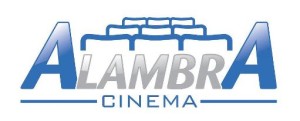I’ve always thought that anybody significantly mired with debt doesn’t have continuing company fantasizing about your your your retirement. In my situation, this stretches also to a property home loan, and that’s why we usually state “the foundation of economic freedom is just a paid-for house.”
Unfortunately, nevertheless, it’s a well known fact that numerous Canadian seniors making the effort to retire, despite onerous credit-card financial obligation and on occasion even those wealth that is notorious called payday advances. Compared to having to pay interest that is annual 20% (when it comes to ordinary charge cards) and more than that for payday advances, wouldn’t it seem sensible to liquidate a few of your RRSP to discharge those high-interest responsibilities, or at the very least cut them right down to a manageable size?
This question pops up occasionally only at MoneySense.ca. For instance, economic planner Janet Gray tackled it in March in a Q&A. A recently resigned audience wished to repay a $96,000 financial obligation in four years by experiencing her $423,000 in RRSPs. Gray responded that it was ambitious and raised questions that are multiple. For just one, withholding taxes of 30% regarding the $26,400 withdrawals that are annual she’d need to take out at the least $37,700 every year from her RRSP, which often can potentially push her into a greater taxation bracket.
For those along with other reasons, veteran bankruptcy trustee Doug Hoyes claims flat out that cashing in your RRSP to repay financial obligation can be an all-too-common misconception. web In reality, it’s Myth # 9 of 22 outlined in his brand new guide, straight talk wireless on the cash. Myth #10, in addition, is the fact that payday advances really are a short-term fix for the short-term issue. Hoyes says that aside from loan sharks, payday advances will be the many form that is expensive of. In reality, while cash advance loan providers may charge $18 for every single $100 borrowed, which is not money that is cheap annualized, Hoyes determines it really works off to an astonishing 468%.
Therefore just forget about pay day loans, which for seniors and anybody else is normally a hopeless resort that is last. When compared with that, cashing out your RRSP seems a less option that is pernicious it is in no way a slam dunk choice. For example, so when Gray noted, you will find taxation consequences to withdrawing funds from an RRSP or even a Locked-in pension Account (LIRA). In the event that withdrawal moves you into a greater taxation bracket (as appeared to be the instance into the Gray Q&A), “it’s feasible you might lose half your funds towards the income tax guy,” Hoyes claims.
If you’re so with debt that you’re considering bankruptcy or perhaps a customer proposal, “It usually makes no feeling to money in to your your retirement records,” Hoyes says. Besides, while RRSPs have actually less strings attached with them, “cashing out” of a LIRA is more problematic since, because the term implies, the income is “locked in” for the real function: your ultimate your retirement. Pension regulators don’t want you making use of them on a whim. As an example, in Ontario in the event that you need to money in a LIRA before your retirement, you must submit a difficulty application to your Pension Commission of Ontario, and you’ll be allowed to withdraw a swelling amount only when you are able to show difficulty. And unfortunately, Hoyes states that the large amount of financial obligation will not meet up with the concept of difficulty.
It’s important to understand what assets can and should not be seized by creditors. Your property could be seized in the event that you don’t spend your home loan along with your vehicle may be seized in the event that you don’t spend your vehicle loan, Hoyes claims. However in Canada, it’s extremely difficult for the creditor (such as for example a credit-card business) to make you to definitely liquidate a LIRA. Just because a LIRA is locked in, it can’t be seized in a bankruptcy. As well as for RRSPs, a trustee can simply seize RRSP efforts manufactured in the final one year preceding a bankruptcy.
A significantly better way to obtain funds, them, are non-registered investment accounts if you have. And also this might have income tax effects (mainly money gains) however they are apt to be less serious than plundering your RRSP.
One reason Hoyes prefers this path is the fact that in a bankruptcy, unregistered assets are seizable by creditors. In comparison, it is not likely which you will lose your RRSP or LIRA in a bankruptcy. In a bankruptcy “you will totally lose the assets anyhow, in, pay your debts, and avoid bankruptcy,” Hoyes writes in the book so it makes sense to cash them.
Even so, for anyone with an increase of debts than they could ever aspire to repay even although you do money into your assets – and in case you’ve got registered assets that you’dn’t lose in a bankruptcy – Hoyes does not rule out of the choice of bankruptcy, that he claims “may be better cashing in retirement reports.”
Most of which shows the apparently simple response of utilizing your RRSP to jettison debt that is pre-retirement fraught with prospective pitfalls. As Gray recommended, it is far better submit your want to a economic planner or income tax specialist to find out whether this program of action is reasonable in your particular situation.

